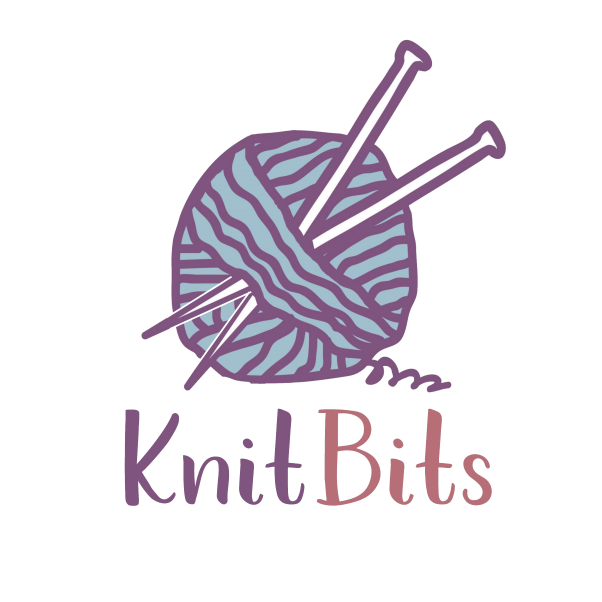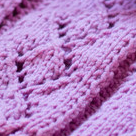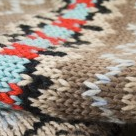Knitting for Beginners
Learn How to Knit with Knitting Naturally!
Check Out my Knitting Supplies Store here...
For all your knitting needs...
Currently only shipping to Australia and New Zealand
Quick Links
- Archived - Ask a Knitting Question
- Basic Knitting Stitches
- Beginner Knitting Patterns
- Knitting Abbreviations
- Needle Sizes Chart
- Crochet Hook Sizes
- Tension Squares
- Yarn Comparison Chart
FYI: This site receives a small amount in commissions from affiliate links and third-party advertising.

Knitting for beginners is undergoing somewhat of a renaissance. Until recently knitting was viewed as slowly dying art.
Some might argue that it still is, but slowly knitters are emerging back into the public view knitting on trains or trams, at lunch time in the city or at the park with the kids.
I often knit during my commute to work and people seem to be fascinated by it.
Not many of the people who approach me know how to knit, and the few that do often haven't picked up their knitting needles in decades.
Most of my in-transit knitting involves small items (baby knitting in fairly fine wool) knitted in the round on two circular needles so I guess I am not your average knitter.
But I never fail to draw attention, I always receive compliments on my works in progress and most will tell me that they wish they could knit too.
Knitting is Becoming Trendy!
Knitting is a great way to use what I call dead time. I knit on the train, while watching tv or during car trips (when I am not the one driving of course).
I find it relaxing and it allows me to exercise my creative side. I knit baby stuff (cause I really like fine work), baby shawls (again fine work) and I love customising knitting patterns to create my own totally unique creations.
Knitted items make perfect individualised gifts for family and friends, and you can use your knitting skills to create many beautiful items to decorate your living space.
If you didn't learn how to knit as a child all is not lost. Knitting really is not that difficult and most people can learn reasonably quickly and easily. I was taught how to knit as a small child and I have taught my daughter and my eldest grand-daughter how to knit when they were in Junior Primary.
So if they can do it, so can you!
Knitting for Beginners
Knitting is a skill and like all other skills that you acquire during your lifetime, it takes time, patience and perservence to master it.
Although knitting is not difficult - anyone can learn how to do it - it does involve learning some fairly intricate hand movements which will (with practice) become almost automatic, but while you are still learning you are likely to feel as if your digits are all thumbs!
You will not be a knitting ninja overnight and some of you will give up before you are even close to being comfortable with your needles in hand, but if you are prepared to put in the effort to learn and practice (practice, practice, practice), you will get there.
To help you to learn, you will find step by step instructions and knitting hints and tips on this site as well as simple patterns designed for beginners. Don't worry if you are seasoned knitter, you will also find resources on the site for those of you who are more experienced.
Knitting for Beginners - Let's Start with the Basics
If you are new to knitting, this is the place for you to start.
In this section of the website you will find pages that will fill you in on the basics of the craft, like how to choose a pattern and what to look for when you are looking for your first knitting projects.
 Getting Started | © Deborah Mason & Knitting Naturally
Getting Started | © Deborah Mason & Knitting NaturallyIn this section of the website we go through:
- Knitting Instructions for Beginners,
- How to Choose and Read a Knitting Pattern,
- What Knitting Jargon and Abbreviations mean,
- Which knitting accessories you need to started,
- Links to some knitting patterns for beginners to get you started
Work your way through these pages and practice the skills you learn on your first knitting project!
Knitting Instructions for Beginners
In knitting there really are just two stitches that you need to master - knit and purl. Every stitch pattern you use in knitting is a combination of these two stitches with increases and decreases thrown in to make different patterns in the knitted fabric. Learn those two stitches and a few basic knitting techniques (like casting on and casting off) and you can pretty much knit anything.
The beginner instructions/tutorials will cover topics like:
- Holding the needles
- How to do knit stitches
- How to do purl stitches
- How to cast on
- How to cast off
Once you are comfortable with those basic techniques you will probably be dying to try something more challenging than just knitting a plain square or rectangle (although many very useful knitted items are quite plain and either square or rectangular like scarves, blankets, cushions covers etc...) and if you are planning to make anything that has shaping, you are going to need to know how to increase and decrease stitches.
Although there are quite a few ways of doing either, the tutorial below will outline the steps for the most common or basic methods for you to try and practice.
- How to increase stitches
- How to decrease stitches
Knitting Techniques - Not all of these are suitable for Beginners...
But I thought you might like to see the type of knitting you could attempt after you have mastered the basics!
There are quite a few different knitting techniques that you can apply to your knitting depending on your level of experience and the effect you are trying to achieve. Check out this section of the website for more about Aran Knitting, Fair Isle, knitting lace (simple or true), Intarsia, Modular, Mitred or Shadow knitting.
Knitting Patterns: Beginners - Intermediate - Advanced...
Whether you are looking for patterns suitable for a beginner or you want something a bit more advanced, this is a good place to start. Some of the types of patterns available on this site include:
- Knitting Patterns for Beginners
- Easy Knitting Patterns
- Scarf Knitting Patterns
- Sweater Knitting Patterns
- Childrens Knitting Patterns
- Baby Knitting Patterns
- Knitted Toy Patterns
Some of the patterns are pretty basic but that makes them perfect if you want to create your own designs. You can use these patterns for the basic shaping and add your own touches by using some of the knitting stitch patterns I have one the site. I will also show you some of my favourite sources for free or low cost patterns to keep you happily knitting for years.
Couldn't Find What You Were Looking for?
Try searching the site using the search box below:

Recent Articles
-
Shetland Knitting and Shetland Knitters
Feb 07, 21 07:44 AM
Shetland knitting and the women in the Shetland Isle who create Shetland lace are among the best knitters in the world. -
Fixing Knitting Mistakes
Jan 28, 21 02:35 AM
When you are learning how to knit, you are going to make a few mistakes. It might not make you happy but fixing knitting mistakes is par for the course. -
Shetland Lace Knitting
Dec 11, 19 07:03 PM
Shetland Lace Knitting is a particular style of knitting that developed in the Shetland Islands and was one of the main exports of the Island early in the last century.

 >
>











